Start Licensing’s Ian Downes takes a look at some strong licensed lines in the Easter Egg aisle.
Easter has well and truly arrived at retail with a broad selection of licensed Easter Eggs in the market.
Although Easter Eggs is a little bit of a misnomer in some cases, as there is a real move to figural and shaped 3D chocolate products.
I think a market move in this category is that well established chocolate brands such as those owned by Cadbury’s and Nestle are more and more active in the seasonal market which has had an impact on licensing – licensed ranges can get overshadowed by powerhouse brands. To counter this, licensees seem to have invested more in NPD and creativity in regards to their products. They are ‘adding value’ by using licences and creating products that can compete with the bigger brands.
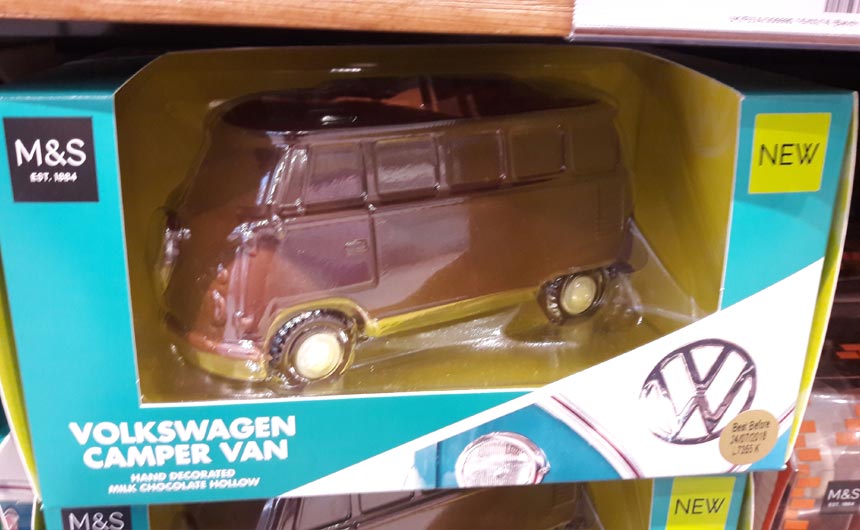
Some great examples of this trend are to be found in Marks & Spencer’s at the moment. Stand out lines include a 3D Poppy Trolls figure, a Volkswagen Camper Van, Thomas the Tank Engine and a 3D My Little Pony. All four of these are impactful on shelf in product terms, but also well presented in packaging terms.
These products are great examples of using licences well and using licensing to create a distinct point of difference in an ultra competitive market. The licensees in the sector have adjusted their approach to Easter and traded up to compete. Another side benefit of these developments is that it really reinforces the fact that the products are giftable and will attract impulse purchase.
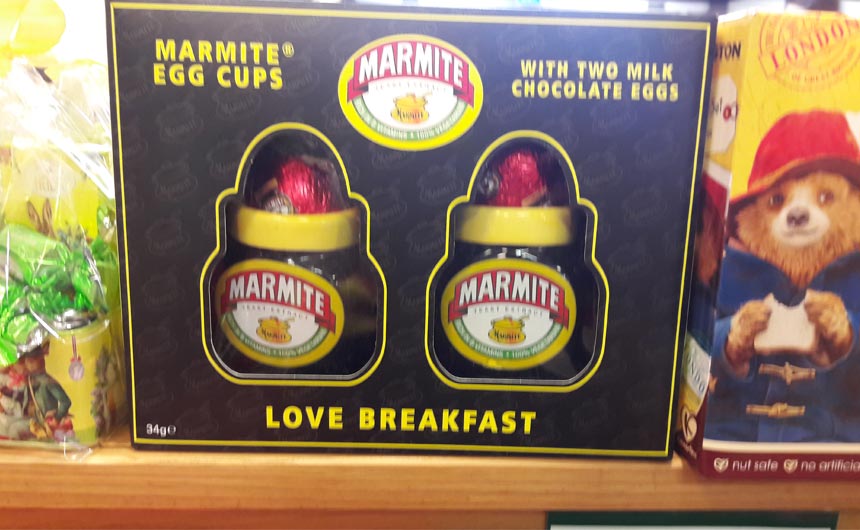
Easter Eggs is also a category that sees food and drink brands being activated. One good example is a Baileys Salted Caramel Egg – alcohol brands are a good fit with chocolate – the flavour and taste profile working well. Brands like Baileys have a good track record in the category.
Another interesting example from the food category I saw was a Marmite Easter Egg product – a really eyecatching gift set featuring two Marmite jar style egg cups coupled with two mini chocolate eggs. A good use of an iconic brand and its packaging. For the brand owner, a product that includes egg cups is a clever way of reinforcing one of the eating occasions for Marmite and getting their brand into consumer’s hands in a novel way.
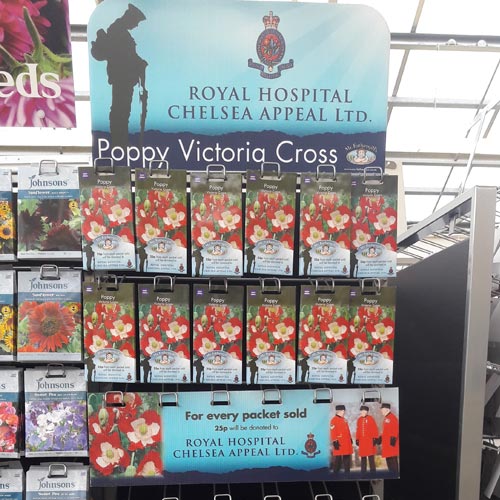
I spotted two interesting examples of licensing in my local garden centre this week as well. Garden centres are a retail sector that frequently features licensed product but generally in new and novel ways – ways which fit the category and consumer buying behaviour while there.
The first example was from seed company Mr. Fothergill’s. It has a partnership with the Royal Hospital Chelsea – home of the Chelsea Pensioners. The Chelsea Pensioners are recognisable for the scarlet tunics. Linking with an appeal being run by the Hospital, Mr. Fothergill’s has cleverly focused on the scarlet tunics and created two products. One is a range of Sweet Pea seeds called Scarlet Tunic and the other poppy seeds called Victoria Cross – a striking red poppy with a white Victoria Cross on it – a nod to the Victoria Cross medal.
The products were prominently displayed on a dedicated FSDU and the rich red colour of the seed packs really stood out in store. One benefit of garden centres is that they generally have a lot of space and can, therefore, really display product well and stock ranges of product in-depth.
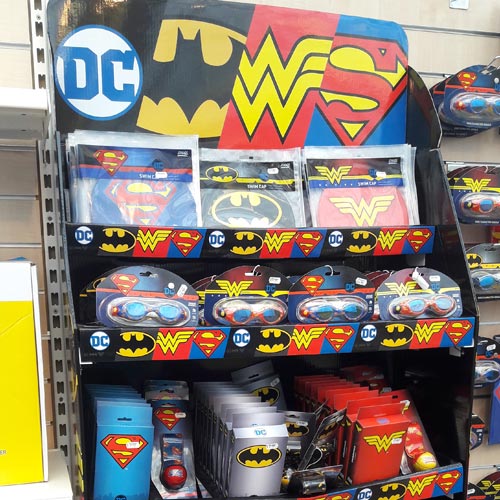
The second example of licensing that caught my eye was a range from swim accessories company Zoggs. It has had licences with Peppa Pig and Disney previously. Zoggs has developed a range with DC Comics/Warner Bros. brands Wonder Woman, Superman and Batman which encompasses items such as swim floats, caps, goggles and bags. Again the range was supported in-depth by the retailer with plenty of space and a dedicated FSDU. This dominated the space well and created a real splash.
I presume licensing is working well for Zoggs – this is its third licensed range to my knowledge. A good case study of licensing making an impact in a new category and creating a point of difference for the licensee. I think it is a good case study – Zoggs is a strong brand in its own right, but clearly it sees a value in licensing and that it is making a difference in its business.
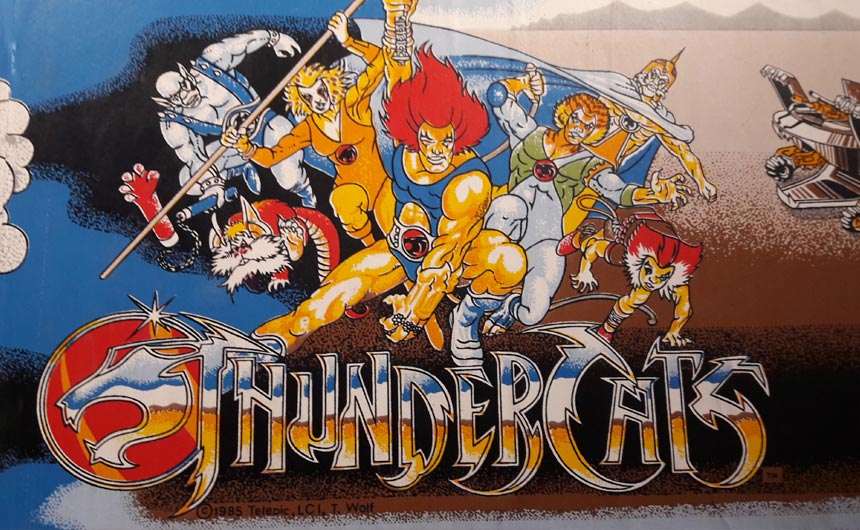
Finally I visited Atomic Burger in Bristol this week. A great burger restaurant made all the better by the fact it is decorated with vintage and retro toys, posters, stickers and wallpaper. A real tribute to licensing and pop culture.
A particular highlight for me was the Thundercats wallpaper while another was spotting a pair of Zig & Zag plush toys… I was involved in the licensing programme for them and remember the deal for these plush toys being done. I nearly shared that information with the waitress but luckily decided that would be a very odd thing to do…
Atomic Burger was a great reminder that much of what we do in licensing contributes to pop and fan culture – it has created a fun venue and one that should mean there is always something to talk about when dining out.
Ian Downes runs Start Licensing, an independent brand licensing agency. His Twitter handle is @startlicensing – he would welcome your suggestions for what to look out for.































